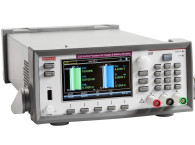“We are pleased to announce that MIPI M-PHY will deliver a peak data rate of 11.6 Gbps on one lane and increase bus and system efficiency,” says Joel Huloux, chairman of the board of MIPI Alliance. “The new specification dramatically bolsters performances and throughput of data transmitted on 2 pins and offers companies new opportunities to enhance the capabilities of protocols that operate on this technology.”

Mobile product designers take notice
The MIPI Alliance is an international organization that develops interface specifications for mobile and mobile-influenced industries. Members of the organization include handset manufacturers, device OEMs, software providers, semiconductor companies, application processor developers, IP providers, test and test equipment companies, as well as camera, tablet and laptop manufacturers.
According to the MIPI Alliance, MIPI M-PHY enables designers to implement a variety of essential high-speed applications while meeting the strict low-power and low electromagnetic emissions requirements in the mobile environment. It supports chip-to-chip and multimedia applications based on native MIPI protocols as well as protocols supplied by external partner organizations. It also offers designers the use of optical media to extend options for routing high-speed connections inside a system.
 The new release, v4.0, augments MIPI M-PHY’s performance by adding a fourth gear (Gear 4 at 11.6 Gbps), enabling designers to double the potential bandwidth per lane compared to the previous specification. It introduces adaptive receiver equalization to improve support for challenging channels while maintaining the peak transmission rate of 11.6 Gbps/lane or 46.4 Gbps over 4 lanes. It also scales optical media converter (OMC) data rates up to Gear 4, giving designers the capability to build connections that are meters in length to support MIPI M-PHY’s use on more types of devices and the growing market for mobile-influenced platforms, such as automotive systems.
The new release, v4.0, augments MIPI M-PHY’s performance by adding a fourth gear (Gear 4 at 11.6 Gbps), enabling designers to double the potential bandwidth per lane compared to the previous specification. It introduces adaptive receiver equalization to improve support for challenging channels while maintaining the peak transmission rate of 11.6 Gbps/lane or 46.4 Gbps over 4 lanes. It also scales optical media converter (OMC) data rates up to Gear 4, giving designers the capability to build connections that are meters in length to support MIPI M-PHY’s use on more types of devices and the growing market for mobile-influenced platforms, such as automotive systems.The specification’s double bandwidth will enable designers to deliver higher throughput and reduced latency and reduce the number of lanes to lower costs. Reducing the number of lanes would support the use of UniPro on miniaturized printed circuit boards (PCBs) for wearable applications and benefit laptop or phone designs that require installation of interconnections within mechanical hinges. Cameras that use CSI-3, when based on UniPro enabled by M-PHY v4.0, will be able to transmit 4K video with 60 frames per second and 12 bits per pixel on a single differential pair.
MIPI M-PHY v4.0 is available, as well, to support external protocols. Some of the external standards that have previously adopted MIPI M-PHY include Universal Flash Storage (UFS) from the JEDEC Solid State Technology Association; Mobile PCI Express (M-PCIe) from the PCI-SIG; and SuperSpeed USB Inter Chip (SSIC) from the USB 3.0 Promoters Group. MIPI M-PHY has also been adopted by Google, along with the MIPI UniPro transport layer in the MIPI UniPort-MSM interface, to serve the modular needs of the Project Ara smartphone platform.
“The new v4.0 specification extends the capabilities of MIPI M-PHY for future innovations while providing backward compatibility to previous releases, protocols and applications already based on the technology,” said Henrik Icking, chair of the MIPI Alliance PHY working group.
“I want to emphasize as well that advancement of M-PHY does not stop with this release,” Icking said. “The working group plans to continue evolving this versatile specification to meet future data transport needs for mobile and mobile-influenced ecosystems.”
MIPI M-PHY is offered by MIPI Alliance along with the organization’s other two physical layer technologies, MIPI C-PHYSM and MIPI D-PHYSM . The new v4.0 release of MIPI M-PHY thus enhances the ecosystem of physical layer technologies that MIPI Alliance develops to support a range of application requirements. Support for M-PHY v4.0 will be included in the next versions of MIPI UniProSM and MIPI CSI-3SM, which will undergo development later in 2015.
Further additional supporting documents and information about the MIPI PHY Working Group available here.
http://bit.ly/1T3Ah2p.
www.mipi.org






